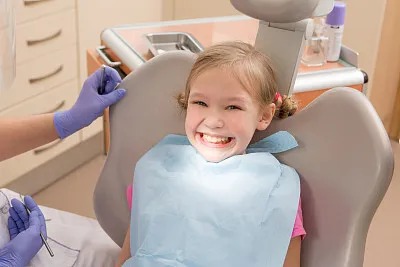The Essential Steps and Considerations for Extracting a Tooth Safely and Effectively in Dental Care Practices
Summary: Extracting a tooth may be a routine procedure in dental care practices; however, it involves careful consideration and execution to ensure patient safety and comfort. This article outlines the essential steps and considerations, emphasizing the importance of thorough diagnosis, effective anesthesia, skilled technique, and proper aftercare. By adhering to these guidelines, dental professionals can enhance the efficacy of tooth extractions, minimize patient anxiety, and promote faster healing. Each section highlights key practices that not only prioritize patient wellbeing but also foster trust in dental care practices. Understanding these foundational steps is crucial for both dental professionals and patients embarking on the extraction process.
1. Importance of Thorough Diagnosis

The first step in extracting a tooth safely is a comprehensive diagnosis. The dentist must evaluate the patients dental history, symptoms, and the condition of the tooth itself. Imaging techniques, such as X-rays, play a pivotal role in understanding the tooths root structure and the surrounding bone.
Proper diagnosis allows for identifying underlying issues, such as infections or cysts, which may complicate the extraction process. Its also essential to assess the patients overall health to determine if they are a suitable candidate for the procedure. Any medical conditions, like blood disorders or heart conditions, must be noted.
Additionally, discussing the reasons for extraction with the patient can foster transparency and trust. By informing the patient of the diagnosis and the reasons driving the extraction, practitioners can ensure that patients feel included in their treatment decisions, ultimately leading to better outcomes.
2. Effective Anesthesia Techniques
One of the most critical aspects of tooth extraction is the management of pain and anxiety through effective anesthesia. Selecting the appropriate anesthetic method—local, sedation, or general anesthesia—depends on the complexity of the extraction and the patients comfort level.
Local anesthesia is often sufficient for simple extractions, ensuring that the area around the tooth is numb for a painless experience. For more complicated procedures or for anxious patients, sedation techniques can be employed, allowing patients to remain relaxed and more comfortable during the process.
Furthermore, dental professionals must confirm that the anesthesia is adequately administered before beginning the extraction. Post-anesthetic evaluations are also necessary to ensure patients are recovering well before proceeding with the extraction. Long-term patient satisfaction is significantly influenced by the effectiveness of the anesthesia during the procedure.
3. Skilled Extraction Technique and Tools
The extraction technique itself is a critical component that contributes to both the success of the procedure and the patient’s recovery. Dental professionals should be well-versed in various extraction methods, enabling them to adapt their approach based on the tooths condition.
Using the right tools is also essential. Dental elevators and forceps must be of proper size and quality to minimize tissue trauma during the extraction. It is equally important to maintain a clear field of vision to prevent complications, which can be achieved through proper positioning and the use of retractors.
Moreover, minimizing the time taken for the extraction while maintaining precision is vital for reducing the overall stress on the patient. This expertise not only helps in achieving a clean extraction but also in reducing the risk of complications such as prolonged bleeding or infection, leading to quicker recovery for the patient.
4. Proper Aftercare Guidelines
The final stage of tooth extraction involves proper aftercare, which is crucial for recovery. Post-operative instructions should be communicated clearly to the patient, ensuring they understand how to care for the extraction site.
Maintaining oral hygiene is important, and patients should be advised to avoid certain activities that may disturb the healing process, such as using straws or vigorous rinsing. Pain management options, including prescribed medications and home remedies, should also be discussed to ease discomfort during recovery.
Regular follow-ups may be necessary to monitor the healing process and address any complications that may arise. Educating patients about the signs of infection or other adverse effects empowers them to seek timely assistance, thus facilitating a smoother recovery.
Summary:
In conclusion, extracting a tooth safely and effectively in dental practices requires a thorough and methodical approach, from diagnosis to aftercare. Following established steps and considerations can significantly enhance the extraction experience for patients and practitioners alike. By emphasizing the importance of precise techniques, effective anesthetic management, and rigorous aftercare, dental care practices can achieve optimal outcomes for tooth extractions.
This article is compiled by Vickong Dental and the content is for reference only.


